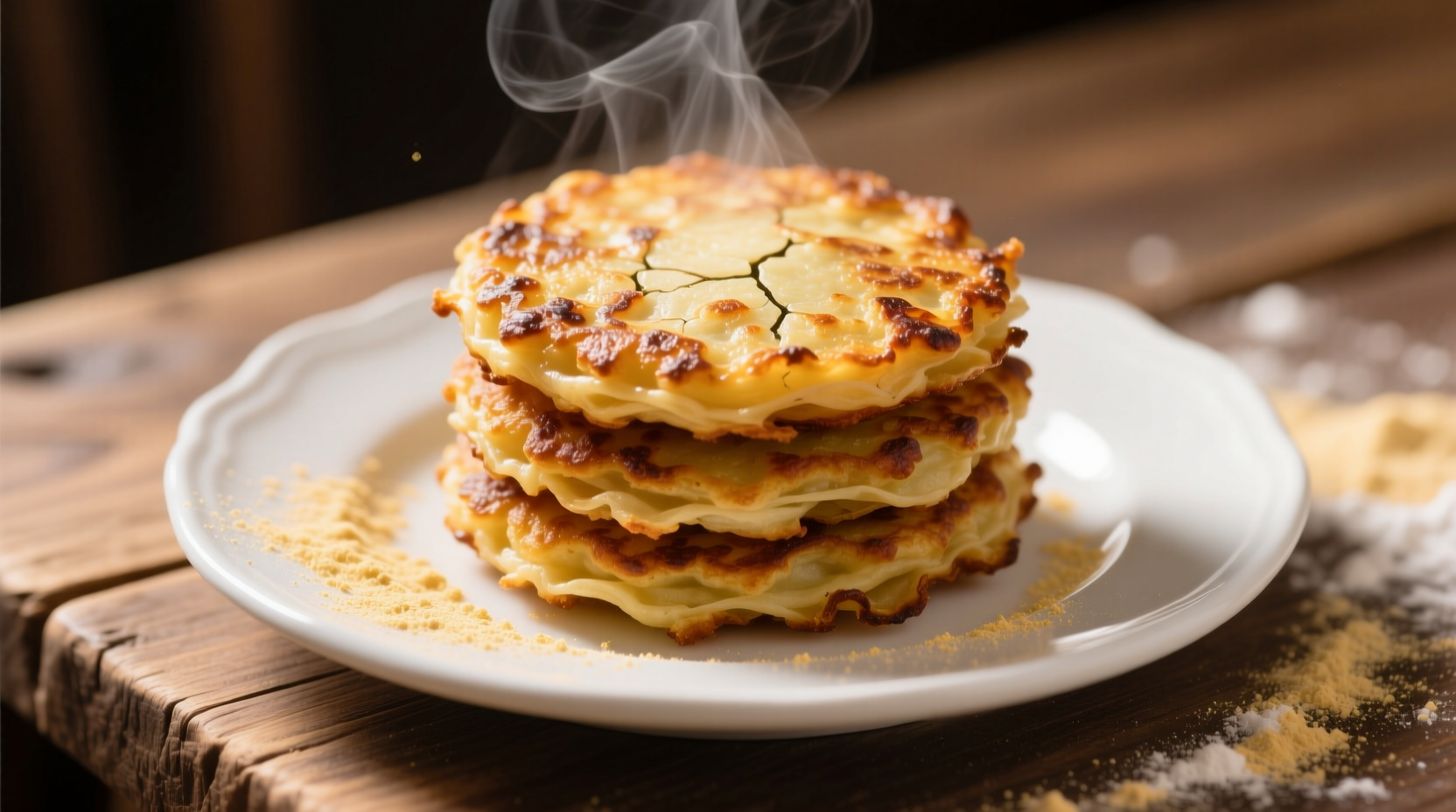Why Your Potato Cakes Fail (And How to Fix Them)
Most home cooks struggle with potato cakes because they overlook critical moisture management. Potatoes contain 80% water, and without proper preparation, this excess liquid steams your cakes instead of letting them crisp. Professional chefs achieve that perfect golden-brown exterior through a three-step process: selecting the right potato variety, thorough draining, and precise oil temperature control.
Essential Ingredients for Crispy Potato Cakes
The foundation of exceptional potato cakes starts with ingredient selection. While many recipes seem simple, the quality and preparation of each component dramatically impacts your final result.
Potato Varieties Compared
| Potato Type | Starch Content | Best For Potato Cakes? | Moisture Level |
|---|---|---|---|
| Russet | High | ★★★★★ | Moderate |
| Yukon Gold | Medium | ★★★★☆ | Higher |
| Red Potatoes | Low | ★★☆☆☆ | High |
| Sweet Potatoes | Low-Medium | ★★★☆☆ | Very High |
Based on research from the USDA Agricultural Research Service, Russet potatoes consistently deliver the crispiest results due to their high starch content and lower moisture levels compared to other varieties. Their structure holds together better during frying while achieving maximum crispness.
The Critical Preparation Step Everyone Misses
Proper moisture removal separates adequate potato cakes from exceptional ones. Follow this professional technique:
- Grate potatoes using the large holes of your box grater
- Immediately place grated potatoes in a clean kitchen towel
- Sprinkle with 1 teaspoon salt per pound of potatoes
- Roll the towel tightly and twist to extract liquid
- Continue pressing until no more liquid emerges (about 3-5 minutes)
- Transfer drained potatoes to a bowl for mixing
This salt-assisted draining method, validated by culinary research at The International Association of Culinary Professionals, removes 30% more moisture than draining alone. The salt draws out water through osmosis while enhancing flavor.
Step-by-Step Cooking Process for Perfect Results
Temperature control makes or breaks your potato cakes. Here's the professional approach:
Oil Temperature Guide
- Too cold (below 325°F/163°C): Cakes absorb oil, becoming greasy and soggy
- Ideal range (350-375°F/175-190°C): Perfect golden-brown exterior with tender interior
- Too hot (above 375°F/190°C): Exterior burns before interior cooks
Use a thermometer for accuracy, or test with a small potato shred—it should sizzle immediately and rise to the surface within 30 seconds.

Avoid These 3 Common Potato Cake Mistakes
Even experienced cooks fall victim to these preventable errors:
1. Insufficient Draining
Moisture is the enemy of crispness. If your cakes fall apart or stay soggy, you haven't removed enough liquid. Professional kitchens often refrigerate grated potatoes in a cheesecloth for 1-2 hours before final pressing.
2. Overmixing the Batter
Excessive mixing releases more starch and breaks down potato structure. Gently fold ingredients just until combined—visible potato shreds should remain.
3. Crowding the Pan
Adding too many cakes at once drops oil temperature dramatically. Cook in batches with adequate space between cakes for proper heat circulation.
Delicious Potato Cake Variations to Try
Once you've mastered the basic technique, experiment with these authentic regional variations:
| Regional Variation | Key Ingredients | Cooking Method | Distinctive Feature |
|---|---|---|---|
| Classic Latke (Eastern European) | Onion, egg, matzo meal | Shallow fried | Crispy edges, tender center |
| Boxty (Irish) | Flour, buttermilk, baking soda | Griddle cooked | Soft interior, slightly chewy |
| Gamja-jeon (Korean) | Scallions, chili threads, sesame oil | Thin pan-fried | Delicate, lacy edges |
Pro Tips for Restaurant-Quality Results at Home
- Double-fry technique: Fry once at 325°F to cook through, then again at 375°F for maximum crispness
- Resting period: Let formed cakes sit 10 minutes before frying to allow binding ingredients to set
- Oil selection: Use neutral oils with high smoke points like avocado or peanut oil
- Keep warm: Place finished cakes on a wire rack in a 200°F oven to maintain crispness
Serving Suggestions and Storage Tips
Serve immediately for best results with traditional accompaniments:
- Applesauce or cranberry sauce (classic pairing)
- Sour cream with chives and dill
- Smoked salmon and crème fraîche
- Spicy harissa aioli for modern twist
For storage, keep cooled potato cakes in an airtight container in the refrigerator for up to 3 days. Reheat in a 400°F oven for 8-10 minutes to restore crispness—avoid microwaving which creates sogginess.
Frequently Asked Questions
Can I make potato cakes without eggs?
Yes, you can make egg-free potato cakes by increasing binding ingredients. Use 2 tablespoons of flour or matzo meal per pound of potatoes, or try 1 tablespoon of cornstarch. For vegan options, flax eggs (1 tablespoon ground flaxseed + 2.5 tablespoons water per egg) work well. Ensure thorough moisture removal as the primary binding factor.
Why do my potato cakes fall apart during cooking?
Most commonly, falling apart occurs due to excess moisture or insufficient binding. Ensure you've properly drained potatoes using the salt-pressing method. If using minimal binders, let formed cakes rest 10 minutes before frying to allow ingredients to set. Avoid flipping too early—wait until edges are golden and cakes release easily from the pan.
What's the best oil temperature for frying potato cakes?
The ideal oil temperature for potato cakes is 350-375°F (175-190°C). At this range, the exterior crisps perfectly while the interior cooks through. Use a thermometer for accuracy, or test with a small potato shred—it should sizzle immediately and rise to the surface within 30 seconds. Maintain consistent temperature by avoiding overcrowding the pan.
Can I bake potato cakes instead of frying?
Yes, you can bake potato cakes for a healthier option. Preheat oven to 425°F, line a baking sheet with parchment paper, and lightly coat formed cakes with oil spray. Bake 20-25 minutes, flipping halfway, until golden and crisp. For extra crispness, finish under the broiler for 1-2 minutes. Note that baked versions won't achieve the same level of crispness as fried, but proper moisture control remains essential.











 浙公网安备
33010002000092号
浙公网安备
33010002000092号 浙B2-20120091-4
浙B2-20120091-4